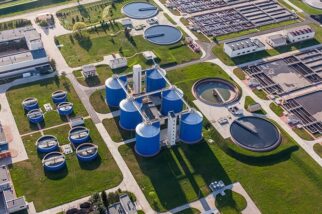Manually controlling water and wastewater treatment processes — such as those performed by aeration basins — typically creates significant operational variations that translate into reduce efficiency, higher costs and lower performance. Automation offers a solution that can drive more efficient and cost-effective operations while providing additional benefits of decreasing energy and chemical use.
The experience of a U.S. water authority that recently collaborated with Emerson to automate control of the secondary treatment process at its wastewater treatment facility bears this out.
Aeration is at the heart of the wastewater treatment process and is critical to ensuring the release of clean water into local waterways. Meanwhile, an accurate and evenly distributed oxygen supply is vital to optimizing wastewater treatment. With this in mind, this water authority identified aeration basin mixed-liquor depth and effluent dissolved oxygen (D.O.) concentration as the primary targets for automation.

Automation enhances operations, saves costs
Emerson’s Ovation™ automation platform provided a digital foundation that helped the water authority embed expert knowledge and best practices of the facility’s operations team into automated control strategies, helping to ensure operational consistency and bridging the gap of workforce transitions due to retirements and new hires.
The results were significant: Introducing automated flow balance and oxygen supply controls enabled the water authority to substantially reduce process variation and oxygen consumption:
- Introducing automated balancing of mixed-liquor effluent flow in response to upstream process adjustments achieved a 74% reduction in day-averaged mixed-liquor depth interquartile range (IQR).
- Subsequent automation of aeration basin oxygen feed controls reduced variation in the day-averaged effluent D.O. IQR by as much as 59%.
- Annual oxygen usage in the secondary treatment process was reduced by 30%
- Reducing annual oxygen usage resulted in a substantial annual oxygen cost reduction of over $1 million per year at 2019 rates.
Importantly, these improvements did not negatively affect downstream wastewater treatment metrics, nor did they require the addition of new treatment infrastructure or instrumentation.
The collaboration demonstrates the beneficial impact of automation in improving treatment-process performance. Interested in learning more? This white paper provides a deeper dive into the implementation of secondary treatment automation at the plant and its impact on key process metrics. You can also visit the Water and Wastewater page on Emerson.com to learn more about our comprehensive suite of software and services that help water industry users improve operational efficiency and minimize costs.



